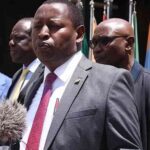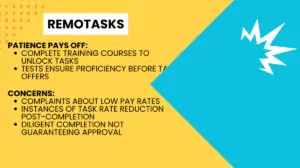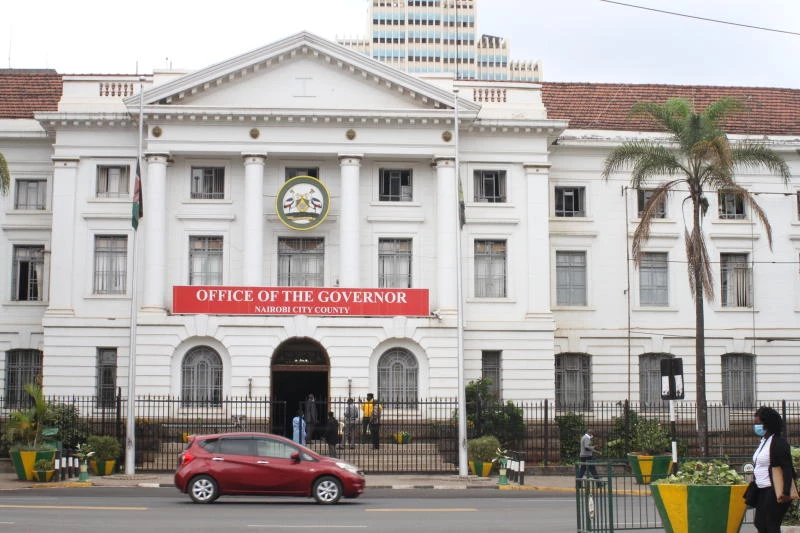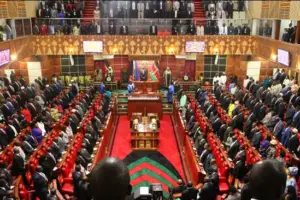It is commonplace that Kenya Airways has been struggling despite recent claims of profitability.
While the airline has reported a half-year profit for the first time in over a decade, the financial stability of the carrier remains tenuous.

The profit figures, while notable, do not fully address the long-standing issues facing Kenya Airways, including its substantial debt burden and operational challenges.
Amidst these ongoing difficulties, a new initiative has emerged aimed at revitalizing the airline.
A group of pilots has submitted a comprehensive proposal to the Ministry of Transport, detailing a strategy for Kenya Airways revival.
The proposal authored by Mwenda Mabura, leverages Kenya’s key economic drivers and is being offered freely to benefit the people of Kenya.
This plan seeks to address the airline’s deep-seated issues and provide a sustainable path forward for the national carrier.
The proposal by Mwenda Mabura outlines a multi-faceted strategy aimed at revitalizing Kenya Airways (KQ) which has been grappling with consecutive losses for ten years, culminating in a record Ksh 38.26 billion loss for the most recent fiscal year.
The airline’s financial woes have been exacerbated by a history of frequent CEO changes, operational inefficiencies, and challenges in maintaining compliance with international standards, as noted in a 2022 audit by the European Aviation Safety Agency (EASA).
Meanwhile, regional competitor Ethiopian Airlines is expanding aggressively and planning to double its destinations and significantly increase its fleet.
The proposed recovery plan notes the urgent need for revamped governance at Kenya Airways.
The current board which includes members with backgrounds in fields unrelated to aviation lacks the necessary expertise.
It is suggested that the board be composed of aviation professionals and relevant stakeholders to effectively drive the airline’s recovery.
Operational inefficiencies have also plagued Kenya Airways, including poor personnel decisions, ineffective outsourcing, and suboptimal routing strategies.
Criticism has also been directed at inadequate customer service, with closed sales offices and understaffed call centers.
The recovery plan proposes a shift in governance and organizational structure.
This includes establishing a board of aviation experts and relevant stakeholders, creating a results-oriented organizational structure, and streamlining operations.
The proposed structure draws inspiration from successful global airlines, such as American Airlines, which has implemented a governance model focused on aviation expertise and stakeholder representation.
The plan also suggests a strategic overhaul of KQ’s fleet, recommending the consolidation of aircraft to reduce costs associated with leasing, maintenance, and training.
The strategy includes using Boeing 737-8 for domestic and regional routes, Boeing 787 series for international destinations, and Boeing 777X for ultra-long-range flights.
A focus on expanding the cargo fleet is also proposed, with the gradual conversion of aging aircraft to cargo-only operations.
The proposed recovery strategy aims to address both governance and operational inefficiencies, seeking to reposition Kenya Airways for future growth and stability.
This plan insists on the importance of targeted leadership and management, operational efficiency and fleet optimization to restore the airline’s financial health and competitive edge in the industry.
Challenges Identified
Leadership and Governance Issues: The current board lacks aviation expertise and stakeholder representation, leading to mismanagement and strategic errors.
Operational Inefficiencies: Poor decision-making regarding critical personnel, ineffective service outsourcing, and irrational aircraft routing.
Customer Service Deficiencies: Closure of sales offices and understaffed, ineffective call centers.
Proposed Recovery Strategy
Revamped Governance: Establish a new board with aviation professionals and key stakeholders rather than just investors. The board should include representatives from various sectors such as aviation, horticulture, tourism, and finance.
Example from American Airlines: The proposal draws inspiration from global best practices, underlining the expertise of board members at American Airlines, such as those with backgrounds in aeronautical engineering, aviation maintenance, and transport infrastructure.
Results-Oriented Organizational Structure: Revamp the organizational structure to focus on Kenya Airways’ core functions and revenue generation. The current structure resembles a banking model, which is not well-suited to the airline’s operational needs.
New Structure: Introduce a more streamlined organizational model with specific roles for managing flight operations, cargo, sales, and marketing. This will also include setting up a Boeing 787 simulator and other training facilities to enhance operational efficiency.
Operational Efficiency: Align procurement processes with industry standards to reduce costs. Implement more objective decision-making criteria to balance competition, transparency, and integrity.
Fleet Reorganization: Standardize the fleet to reduce lease rates, spare parts costs, and training expenses. For example, use Boeing 737-8 for domestic and regional flights, and Boeing 787 series for international routes. Transition some aging aircraft to cargo use to build the cargo fleet cost-effectively.
New Revenue Streams: Develop a regional and international cargo hub using a hub-and-spoke logistics model. Set up a “Drop and Ship” portal for diaspora packages to eliminate intermediaries and boost revenue.
Collaborations: Partner with private investors and technical universities to enhance revenue generation and job creation.
Direct Jobs: Create employment opportunities in various roles including pilots, cabin crew, and engineers.
Indirect Jobs: Generate additional jobs in related sectors such as transport, agriculture, and retail.
